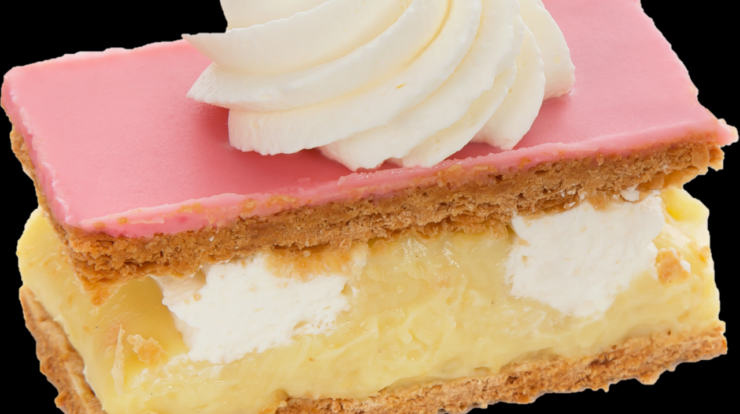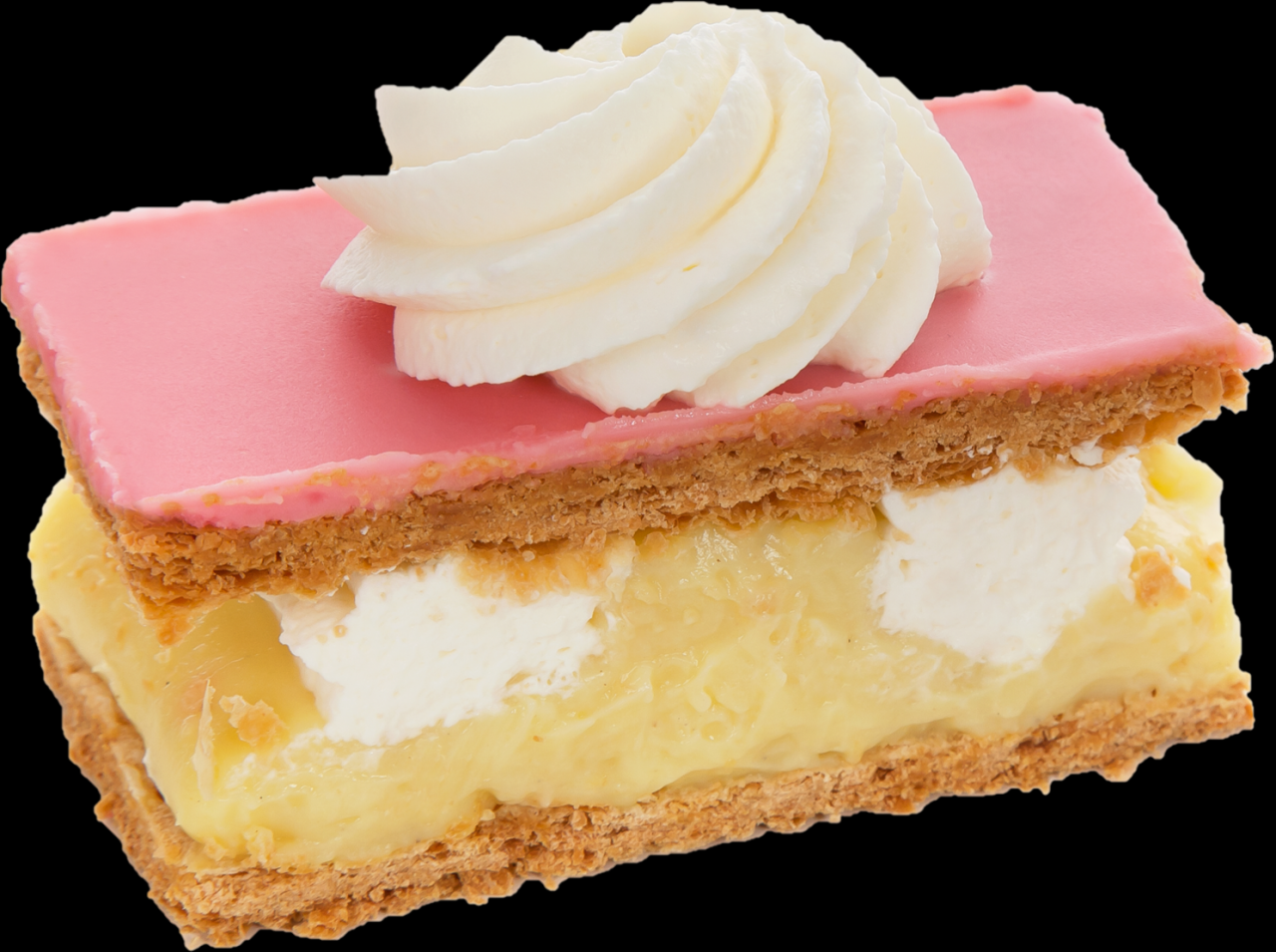
Tompouce, a delectable pastry originating from the Netherlands, has captured the hearts of dessert enthusiasts worldwide. Its unique combination of flaky dough, velvety filling, and glistening glaze makes it an irresistible treat. Let’s delve into the fascinating world of tompouce, exploring its origins, flavors, and cultural significance.
Traditionally, tompouce is crafted with a yeast-based dough that is rolled out and layered with butter, creating a delicate and flaky texture. The filling, typically a creamy custard or whipped cream, adds a luscious sweetness to the pastry. Finally, a thick layer of pink or white fondant glaze completes the tompouce, giving it its signature glossy finish.
History and Origins: Tompouce

The tompouce is a classic Dutch pastry that has been enjoyed for centuries. It is believed to have originated in the 18th century, when a Dutch baker named Tom Pouce created the pastry. The name “Tom Pouce” is French for “Little Tom,” and it is thought that the pastry was named after the famous French dwarf actor, Charles-Nicolas Sévin, who was known by the stage name “Tom Pouce.”
The tompouce quickly became a popular treat in the Netherlands, and it has since spread to other countries around the world. Today, the tompouce is a beloved pastry that is enjoyed by people of all ages.
Ingredients and Preparation
The tompouce is made with a simple dough that is filled with a creamy custard and topped with a layer of pink glaze. The dough is made from flour, sugar, butter, and eggs. The custard is made from milk, sugar, eggs, and cornstarch.
The glaze is made from sugar, water, and food coloring.
To make a tompouce, the dough is first rolled out into a thin sheet. The custard is then spread over the dough, and the dough is rolled up into a log. The log is then cut into individual pastries, and the pastries are baked until they are golden brown.
Once the pastries are baked, they are topped with the glaze.
Flavors and Fillings, Tompouce
The traditional tompouce is filled with a vanilla custard, but there are many other variations on the filling. Some popular fillings include chocolate, strawberry, and raspberry. The glaze is also available in a variety of colors, including pink, yellow, and green.
The different fillings and glazes create a wide range of flavors and textures. The vanilla custard is a classic flavor that is loved by many people. The chocolate filling is rich and decadent, and the strawberry and raspberry fillings are sweet and fruity.
The pink glaze is the traditional color, but the other colors add a fun and festive touch.
Presentation and Serving
The tompouce is traditionally served on a plate or platter. It can be eaten as a snack or as a dessert. The tompouce can also be used to create other desserts, such as ice cream sandwiches and cakes.
When serving a tompouce, it is important to keep the pastry cold. This will help to prevent the glaze from melting and the custard from becoming runny. The tompouce can be served with a variety of accompaniments, such as fruit, whipped cream, or ice cream.
Cultural Significance and Popularity
The tompouce is a beloved pastry in the Netherlands. It is often served at special occasions, such as birthdays and holidays. The tompouce is also a popular treat for tourists. In recent years, the tompouce has become increasingly popular in other countries around the world.
The tompouce is a delicious and versatile pastry that can be enjoyed by people of all ages. It is a classic Dutch treat that has stood the test of time.
Ultimate Conclusion
From its humble beginnings in the Netherlands to its global recognition, tompouce has proven to be a timeless culinary delight. Its versatility, allowing for endless variations in flavors and fillings, ensures that it will continue to tantalize taste buds for generations to come.
Question Bank
What is the origin of tompouce?
Tompouce originated in the Netherlands in the early 19th century.
What is the traditional filling of a tompouce?
The traditional filling is a creamy custard or whipped cream.
What is the significance of the pink glaze?
The pink glaze is said to represent the tongue of a horse, as tompouce was originally called “tompoes,” meaning “horse’s foot.”





